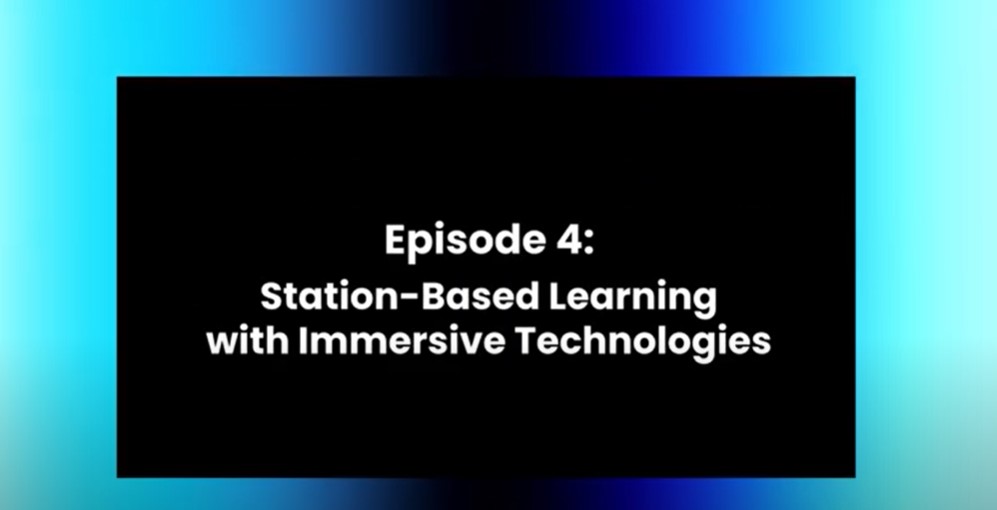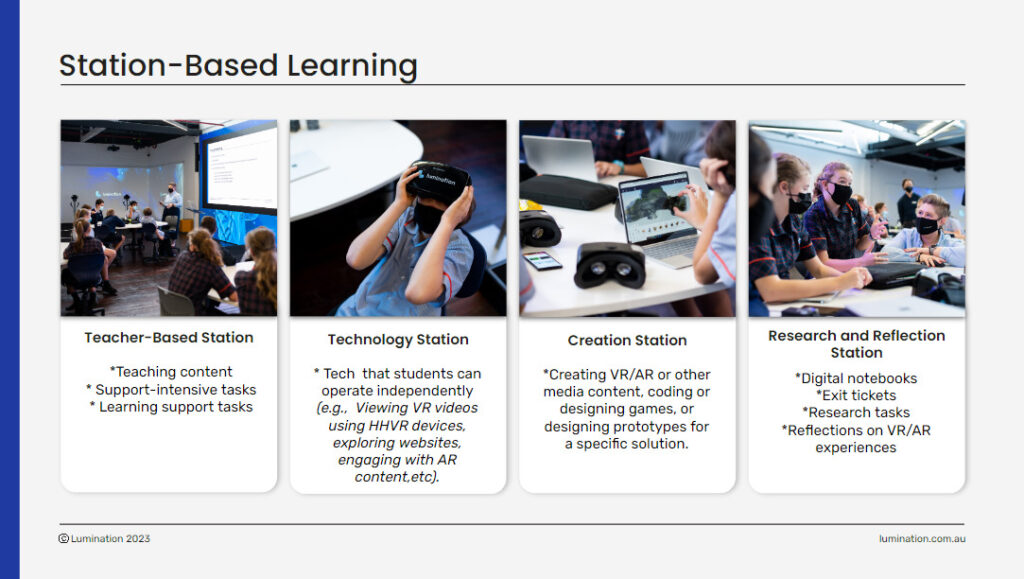Unit C: Station-Based Learning

In this unit, we will be focusing on the ‘How’ of Immersive Learning, especially within a Lumination Learning Lab: Station-Based Learning.
Watch the video below and respond to the task, then you can mark this unit as ‘Completed’.
(Video Duration: 4 mins 45 secs)
Pre-Intro:
What is the dream scenario when it comes to immersive learning in the classroom? Having one-to-one virtual reality devices for students might seem ideal and efficient, but getting all students to do the same thing at the same time can be very limiting especially when it comes to differentiation and student agency. That’s why in our Lumination Learning Labs, we promote station-based learning when using immersive technologies.
[Series Title Animation]
Intro:
Welcome to ImmersEDU! I’m Shai Coggins, an immersive learning specialist, and Learning Design Lead at Lumination.
In this video, we’re talking about station-based learning. This is a student-centred teaching method where learners work independently or collaboratively to complete tasks or engage with content through learning stations in the classroom. It allows teachers to differentiate instruction and incorporate students’ needs, interests, and learning styles. It also promotes collaboration, communication, and creativity. When using technology, it also enables equity of access especially when there’s a limited number of available resources.
Some studies have even shown that using learning stations is found to be very effective in increasing student success compared to the traditional approach. There are definitely many benefits of using this method in the classroom.
Expound:
If you’re considering using station-based learning as part of your teaching practice, here are my top three tips:
First – Plan and prepare:
One of the most important aspects of station-based learning is planning and preparation. Determine the learning objectives and outcomes for your lesson, and choose appropriate activities that align with these objectives. Then, gather all the necessary materials and resources needed for each station and ensure that they are easily accessible.
Tip Number 2 – Provide clear instructions:
Students need to know how to complete the activities successfully. So, it’s important to provide clear directions and expectations for each station, including how much time they have to complete the task and what they need to do. It’s also important to provide guidelines for transitioning from one station to another to manage noise levels and behaviours in the classroom. It would be helpful if you can provide a visual schedule for station rotations.
And, number three- Monitor and assess:
Station-based learning requires active monitoring and assessment to ensure that students are engaged and making progress. Observe students as they work on the activities, offer guidance and support when needed, and provide feedback on their performance. You can also adjust instructions as needed. To make sure students stay on track, it’s great to use formative assessments, such as digital notebooks, quizzes, checklists, or exit tickets. Finally, encourage students to reflect on their learning and provide opportunities for them to share their work with their peers.
At Lumination, we categorise immersive learning stations in four different ways:
- The Teacher-Based Station , which is usually designed where there is a need for higher teacher support.
- The Technology Station , where students can independently use technology that they’re already familiar with.
- The Creation Station , where students show their learning through designing and creating something using immersive technologies.
- The Research and Reflection Station, where students are able to either gather additional information to support what they’re learning or to reflect on the content that they have consumed.
Teachers may choose to use two or more types of stations during the lessons.
Outro:
Now, if you want to learn how you can incorporate immersive technologies into station-based learning, check out the sample lesson plans on our website at lumination.com.au. And, if you’re interested in finding out more about Lumination Learning Labs and other product offerings, please don’t hesitate to reach out.
Remember to like this video and subscribe to our channel so you can be notified when we have new educational content. See you again next time on ImmersEDU!
One key aspect of station-based learning is the learning experience design. Teachers can design each station in different ways. This structure is what we found useful when running our own student sessions in a Lumination Learning Lab.
Depending on the length of the lesson, number of students, and available resources, teachers may only have two or three stations on rotation.


